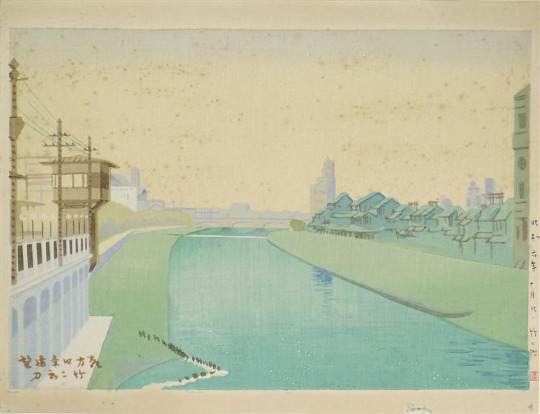#asano takeji
Text

Rain at Kiyomizu Temple in Kyōto, Asano Takeji, 1948
#art#art history#Asian art#Japan#Japanese art#East Asia#East Asian art#shin-hanga#woodblock print#Asano Takeji#cityscape#Kyoto#Kiyomizu Temple#rain#rain scene#rainy day#pluviophile#Showa period#Showa era#20th century art
286 notes
·
View notes
Text
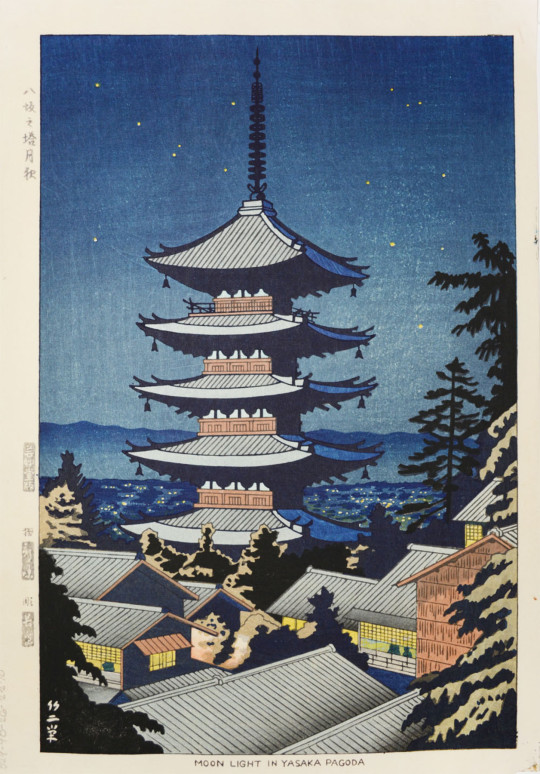
Takeji Asano
225 notes
·
View notes
Text

"Moonlight in Sarusawa Pond, Nara" by Asano Takeji (浅野竹二), 1953
"Luz de luna en el estanque Sarusawa, Nara" de Asano Takeji (浅野竹二), 1953
26 notes
·
View notes
Text

Asano Takeji - "Rain in Shinnyodo," woodblock print, 1952
30 notes
·
View notes
Photo
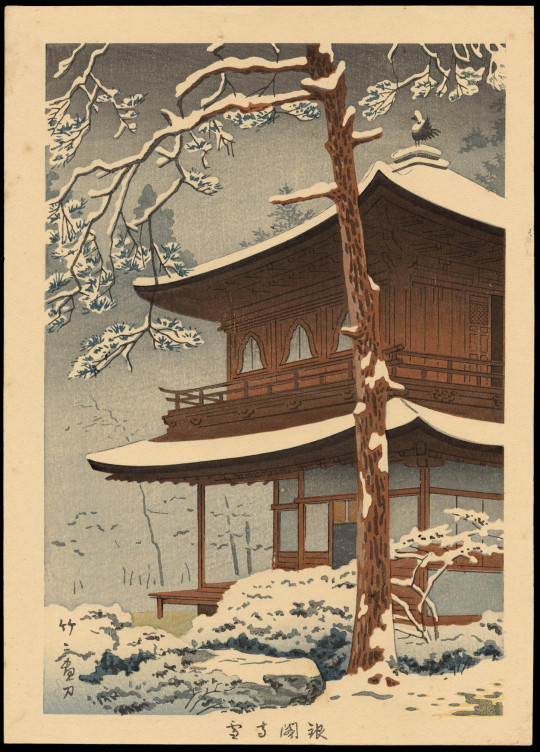
Snow at Ginkakuji, Asano Takeji, 1930
#snow at ginkakuji#asano takeji#takeji asano#ginkakuji#art#woodblock print#Japanese woodblock print#ukiyoe#ukiyo-e#ukiyo e#print#1930#1930s#1900s#20th century
315 notes
·
View notes
Photo


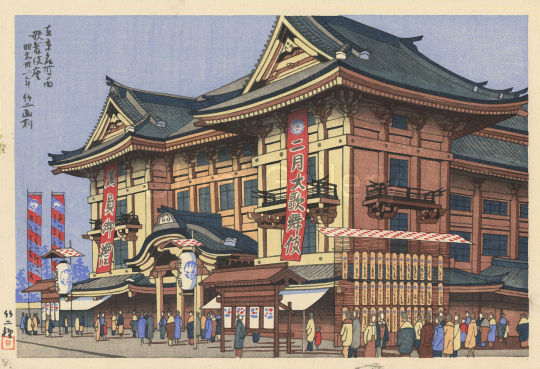






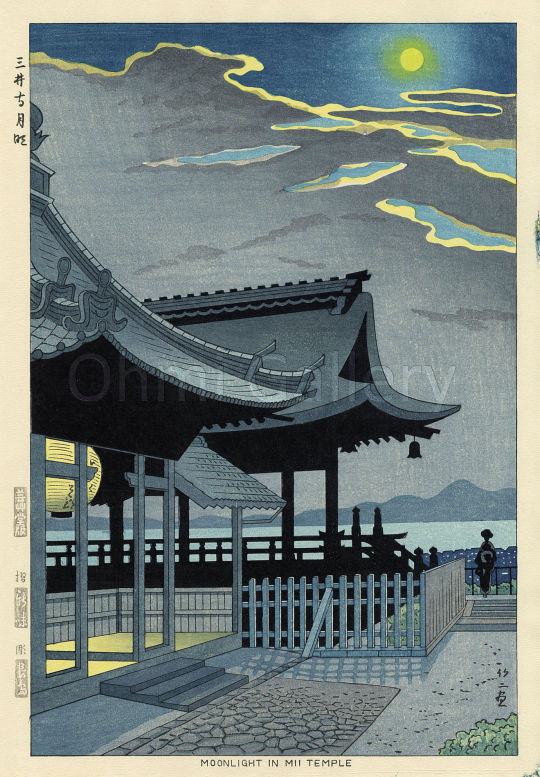
Woodblock prints by artist Asano Takeji (1900-1999). Asano not only drew the initial artwork, but also carved the blocks and did the printing for a number of his designs. [via]
83 notes
·
View notes
Text

Torii Kotondo, “Hair Combing” (1932)
Explore Hundreds of Thousands of Japanese Woodblock Prints in a Ukiyo-e Archive

Yoshida Hiroshi, “Sailboats: Forenoon (Hansen, gozen)” from the series ‘Inland Sea (Seto Naikai shû)’ (1926)
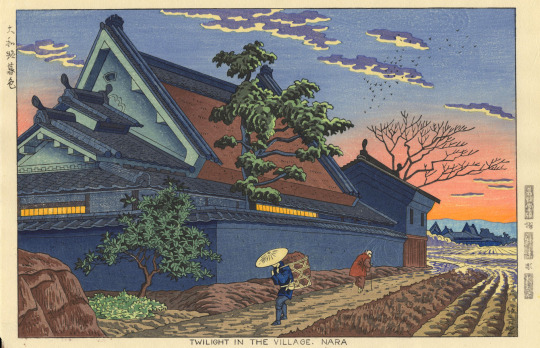
Asano Takeji, “Twilight In The Village, Nara” (1953)

Shoson Ohara, “White Herons and Willow” (1926)
#japanese woodblock prints#torii kotondo#artist#art#ukiyo-e#yoshida hiroshi#asano takeji#shoson ohara
0 notes
Text

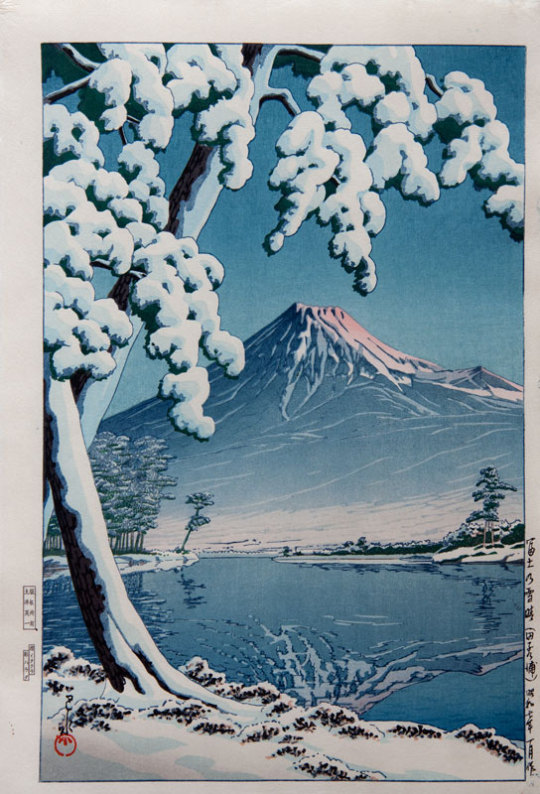


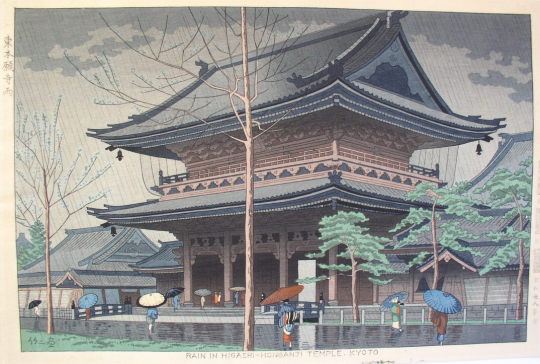


Shin Hanga was an early 20th century art movement in Japan that sought to unify influences from European painting, especially impressionism, with traditional Japanese woodblock printing. In this sense, it forms sort of a mirror movement to Art Nouveau and the general European Japonisme craze of the prior decades. It is distinct from Ukiyo-e in its deployment of color gradients in lieu of pure flat shapes as well as its realistic and distinctively impressionistic handling of light and color.
Artists featured above:
1st row: Kawase Hasui; Kawase Hasui
2nd row: Kawase Hasui; Kawase Hasui; Takeji Asano
3rd row: Hiroshi Yoshida; Kawase Hasui
There's a good podcast on Shin Hanga here.
287 notes
·
View notes
Text
Takeji Asano
Hama Otsu (Lake Biwa) in Shiga Prefecture., 1960
Woodblock Print
10.37 x 15 in
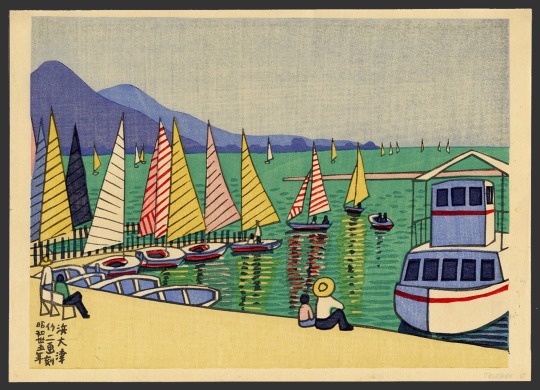
9 notes
·
View notes
Text

Takeji Asano "Gion, Kyoto 1955"
浅野竹二「祇園 京都 1955」
14 notes
·
View notes
Photo

Rain in Kiyomizu Temple, by Asano Takeji, 1951
1K notes
·
View notes
Text

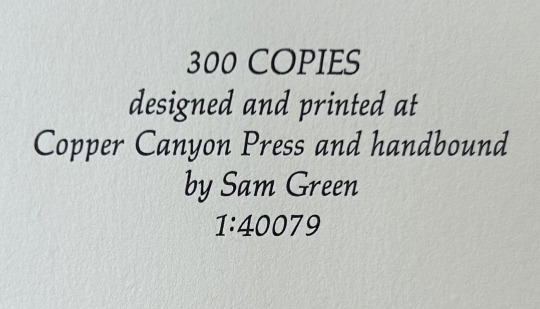
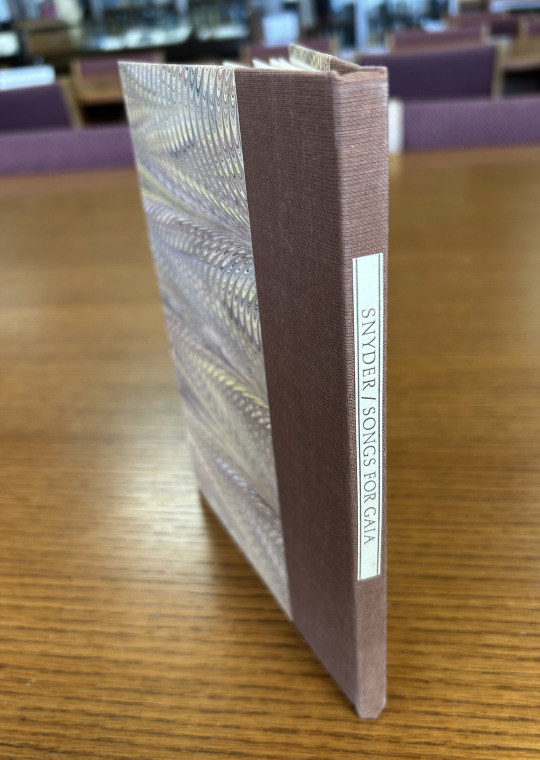







It’s Fine Press Friday!
Today we’re taking a deep dive into Songs for Gaia, a slim edition of poetry by Gary Snyder (b. 1930). This understated, beautifully-crafted letterpress volume was printed in 1979 for Kah Tai Alliance at Copper Canyon in Port Townsend, WA, a fine press dedicated solely to poetry since its founding in 1972, and was handbound by poet and bookbinder Samuel Green. It features woodblock illustrations by poet and printmaker Michael Corr (b. 1940), who learned his craft while living in Kyoto from block printer and illustrator Takeji Asano (1900-1999). Asano was a notable figure in Japan’s Sōsaku-hanga woodblock printing movement. The book is quarter bound in cloth with a cover marbled in a finely executed combed feather pattern, a touch that lends a hint of psychedelia to its otherwise traditional aesthetics. It was released in a limited edition of 300 copies.
Snyder, who is popularly known for his time amongst and spiritualist influence on the Beat poets and the counterculture of their generation (along with Kerouac’s portrayal of him as Japhy Ryder in the 1958 novel The Dharma Bums) spent 13 years in Japan (1956-1968) studying Zen Buddhism, forestry, and ecology. A scholar of Asian languages versed in cultural anthropology, he also studied calligraphy with accomplished calligrapher and seal carver Charles Leong during his time at Reed College. Snyder’s calligraphic signature graces the half-title page of this edition.
This modest yet potent edition of Songs for Gaia is a fitting form for the work of a poet whom writer Bob Steuding once characterized as cultivating an “accessible” style and “a new kind of poetry that is direct, concrete, non-Romantic and ecological.” As Snyder wrote of his own work in A Controversy of Poets, “I try to hold both history and wilderness in mind, that my poems may approach the true measure of things and stand against the unbalance and ignorance of our times.”
View more Fine Press Friday posts
View more woodblock illustration posts
View more marbling posts (shout out to Alice, our resident marbling expert!)
-Ana, Special Collections Graduate Fieldworker
#Fine Press Friday#fine press fridays#marbling#Gary Snyder#poetry#Copper Canyon Press#Songs for Gaia#Samuel Green#Michael Corr#woodblock illustration#woodblock#letterpress#fine press#feather pattern marbling#UWM Special Collections#handbound book#hand binding#Ana
61 notes
·
View notes
Text

"Kamishibai" (紙芝居) by Asano Takeji (浅野竹二), c. 1950
Kamishibai, i.e. paper plays, were a form of street theater and storytelling wherein an itinerant narrator utilized a portable stage and illustrated boards to entertain impromptu audiences, popular from around the 1930's to the early 1950's
"Kamishibai" (紙芝居) de Asano Takeji (浅野竹二), c. 1950
Kamishibai (es decir, obras de teatro de papel) eran una forma de teatro callejero y narración de cuentos en la que un narrador itinerante utilizaba un escenario portátil y tableros ilustrados para entretener a audiencias improvisadas, popular desde alrededor de los años 1930 hasta principios de los años 1950
#japanese art#japanese prints#arte japonés#impresiones japonesas#woodblock print#grabado en madera#浅野竹二#asano takeji#紙芝居#kamishibai
9 notes
·
View notes
Text

Takeji Asano
Snow at Tsukudashima Famous Places in Tokyo, 1956
Woodblock Print
10.37 x 15.50 in
15 notes
·
View notes
Text

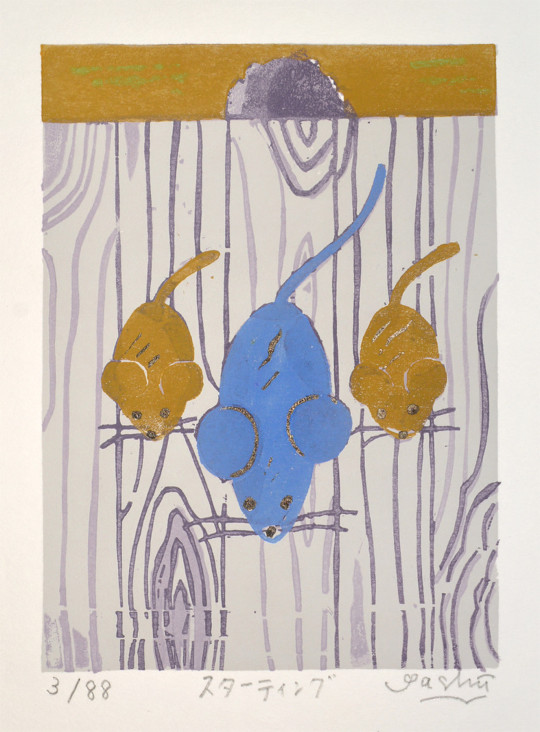


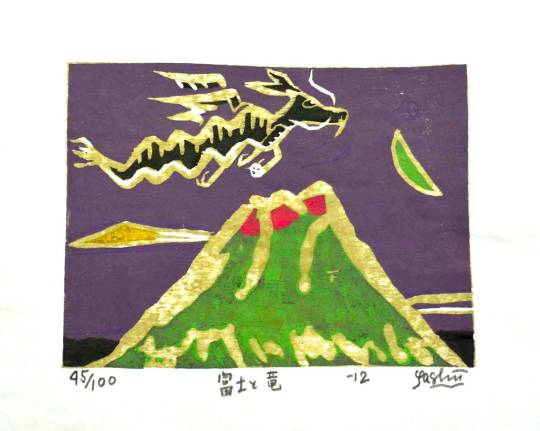
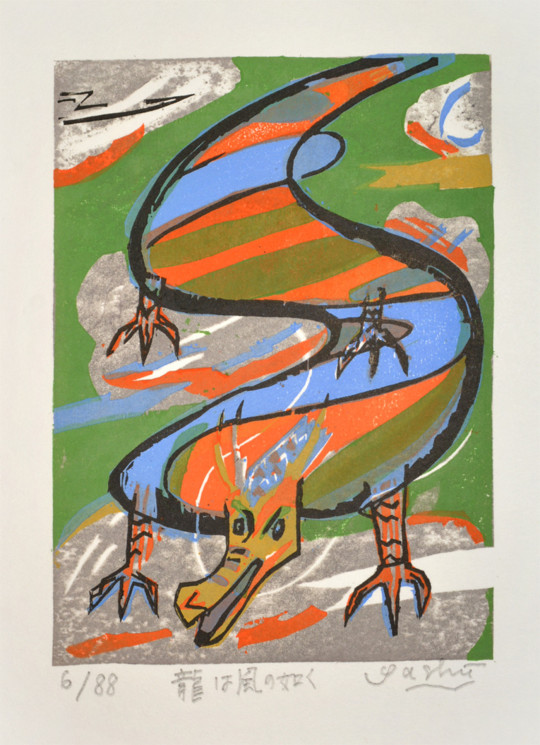

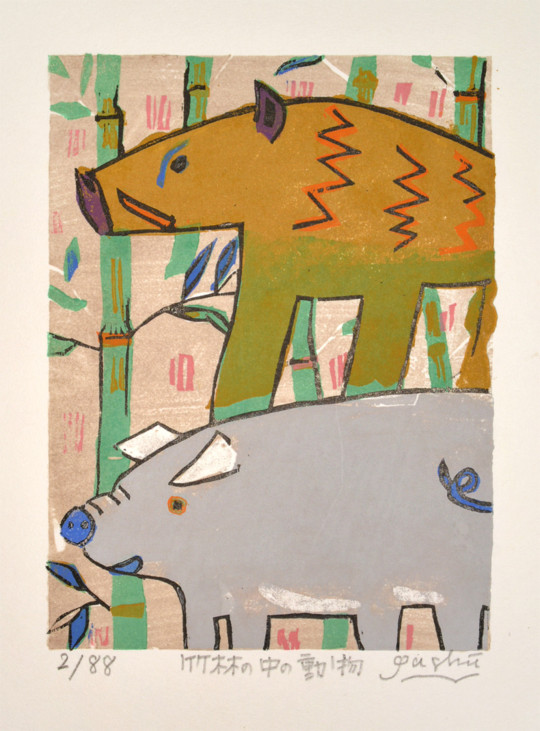

Japanese printmaker Gashu Fukami.
Raised in Kumamoto Prefecture, Kyushu, Gashu Fukami attended Doshisha University in Kyoto, graduating in 1975. During his time in school he discovered the works of Umetaro Azechi and Takeji Asano. These artists inspired Gashu to pursue woodblock printing in 1977. The following year he traveled to the United States to study at Kaji Aso Studio in Boston. Gashu returned to Kyoto in 1983, holding his first solo show in 1988. By 1997, he had moved to Nagasaki, before settling in Fukuoka in 1999.
Self-carved and self-printed, his colorful works carry the spirit of Sosaku Hanga into contemporary printmaking.
31 notes
·
View notes
